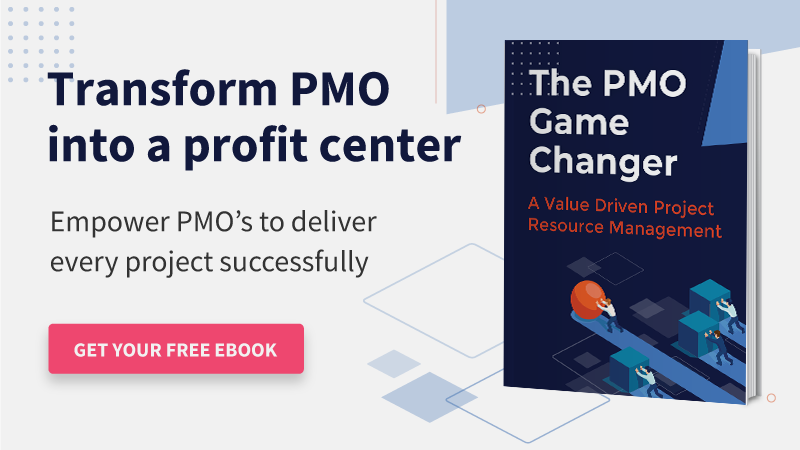The sustained incremental growth for any organization comes from a thoughtful execution of its long-term strategy. It helps future-proof the existing business model and create new opportunities for competitive advantage and innovation.
It is only possible if the portfolio’s scope, projects undertaken, and future initiatives align with the organization’s long-term business goals.
Strategic alignment allows organizations to prioritize suitable projects that will help them reach long-term goals faster and channel the company’s resources in the right direction.

This article will explain how to undertake strategic alignment of a portfolio to deliver high and sustainable performance on a continuous basis.
Let’s start with the fundamentals of strategic alignment of a portfolio;
What is the Strategic Alignment of Portfolio?
It is the process wherein the projects, programs, or individual initiatives are aligned with the organization’s long-term business goals. The word “Alignment” emphasizes that the projects undertaken must comply with the ultimate business objective at every step of your planning process, i.e., from initiation to execution.
According to PMI– “ The strategic fit of a portfolio is the degree to which the sum of all projects and programs reflects the business strategy.’
For instance, the digital marketing organization aims to increase the monthly traffic on a website from 15K to 5X times by next year. So now, the firm will align all social-media and marketing programs (optimizing On-Page and Technical SEO, quality content creation, community building, advertising, etc.) to the traffic generating goal. This strategic alignment of all the initiatives helps increase traffic, generate more leads, and enhance ROI.
Therefore, projects and programs should be grouped into a portfolio based on relevance and similarities. Following that, the portfolio can be undertaken by the project management office (PMO) to meet overall company objectives.
Read More: Impact Analysis: Will PMO Remain Relevant in a Post-COVID World?
Importance of Strategic Alignment of Portfolio
According to HBS research, “the failure to align portfolios with the organization’s goals is a crucial reason why businesses creating innovations fail to become sustainable businesses.”
Today, many organizations are diversifying projects and services and catering to multiple industries. Therefore, the importance of strategic alignment of portfolios has arisen. It helps in creating a big picture by linking every portfolio to the organizational goals.
To achieve long-term goals, employees should also be informed of their companies strategies and what’s expected of them. Once employees know how they can directly contribute to the firm’s success, they begin to work smarter and more efficiently. This boosts workforce productivity which positively impacts the project performance and quality.
Aligning project and program activities with strategic objectives empower businesses to become more resilient against market volatilities. In addition, it makes it easier to manage ad-hoc changes and adapt as opportunities and resource-centric challenges arise.
In summary, the importance of strategic alignment of the portfolio cannot be overstated. Thus, considering it in your next business planning process will improve the ROI and profitability.
Factors Affecting the Strategic Alignment of A Portfolio
Project Prioritization & Selection
The projects that a company takes up decide the firm’s profitability and helps to meet the business goals. The PMO plays a critical role in forming standard project selection criteria to keep everyone on the same page. It means that viable projects with better ROI and also its relevance to the business strategy. It ensures every project you work on should help you climb up the ladder to achieve these goals.
If any projects do not meet the overall organization goals, there will be a waste of resource efforts and adversely affect the bottom line. Therefore, prioritizing and selecting a project is one of the most important factors affecting the portfolio’s strategic alignment.
Resource Allocation Strategy
It is said that- Opportunities are boundless, but resources are limited!
Once projects have been selected and prioritized, it is imperative to identify and allocate competent resources to suitable opportunities. It is a fundamental activity that results in accomplishing the organization’s objectives and helps to maintain overall productivity.
Resource allocation strategy enables deploying the key resources across multiple projects instead of assigning them to a high-priority one. It also keeps a check on resource overloading and potential conflicts. As resources are finite, improper allocation results in cost escalation, delivery delays, and, subsequently, low client satisfaction.
Read More: What is Resource Allocation? A Comprehensive Guide for Project Success
Business Operations
Business operations are the day-to-day activities organizations engage in to generate revenue and improve profitability. It emphasizes how work is done within an organization and automates end-to-end workflows. However, complexities stemming from the ever-evolving business dynamics such as diversification of portfolio and expansions, these processes get standardized to keep operations on track.
A wrong process can put project quality at stake. Therefore, the onus is on managers to proactively detect and respond to critical situations and analyze process performance. Thus, well-designed business processes keep your team’s tasks streamlined.
Reuse of Assets
For strategic alignment and good portfolio management, the organization must re-use the assets from the inventory meticulously. This approach reduces project management costs and acts as a time-saving strategy. In addition, these purpose-made assets can help the teams determine what is in the inventory and what can be reused for the new project. For instance, developers do not need to rewrite the codes and run programs for the things already present in the inventory.
Thus, the ultimate benefit is efficient asset management allows you to do more with fewer resources. It consolidates all project-related data and documents into a central database with real-time updates. The automation within the system ensures that all the data from both previous and ongoing projects are securely collected, routed, and shared for future similar projects.
Read More: How to Manage Resources in Agile Project Management?
Alignment Between Sales & Delivery Team
The sales team and the delivery team drive all the revenue by creating a successful customer journey. If the sales team doesn’t involve the delivery team before signing the deal, it will lead to eleventh-hour resource allocations, jeopardizing the quality of deliverables. Ideally, once a sales opportunity reaches a certain stage, the delivery team gets visibility into the sales pipeline. Thus, there should be a constant collaboration between the sales and development teams.
The sales team should be aware of the company’s long-term goals and strive to win opportunities that propel business sustainability and profitability. They should also consult the delivery team before confirming the feasibility of deliverables to clients and other stakeholders. In this way, both sales and services teams are equipped to support one another’s needs and serve clients more effectively.
Stakeholders Buy-in for Critical Decisions
In an organization, senior executives and key stakeholders are the decision-makers. So, before implementing any major decisions relevant to portfolio management, it is imperative to get consent from concerned stakeholders. In addition, it can help align the business strategies with long-term business goals and drive growth and profitability.
In essence, gaining stakeholder buy-in eradicates downstream problems in portfolio management, such as conflicts over project priorities, internal bureaucracy, program constraints, etc.
Transparency & Communication Among Team members
Transparency in the workplace is critical in building a sense of ownership and enthusiasm among team members. The company’s vision, corporate goals should be communicated to all the resources so that everyone in the team is accountable. After all, a well-organized and collaborative team is the backbone of every successful organization. In addition, it ensures that daily actions of the resources are in line with the strategic direction of the organization’s goals.
For example, the way a remote team interacts differs from the way an in-house team will communicate in the office. And this is often reflected in the productivity of a team. With the right resource management tool and its collaboration feature, managers can effectively communicate in real-time and ensure the right task management.
Read More: 11 Ways to Improve Cross-Departmental Collaboration
Now let’s understand what role resource management plays in managing a portfolio.
Role of Resource Management in Effectively Managing a Portfolio
A portfolio has multiple projects and programs. Due to the limited availability of niche skills or multi-skilled resources, managers find it challenging to manage a portfolio of products or programs. Since resource constraint is a significant concern, the onus is on managers to plan them efficiently and distribute them across different projects.
Let’s take the example of a finance portfolio; a finance portfolio may include diverse banking programs, bank application projects, insurance projects, etc. There might be any stand-alone finance project also. As a portfolio manager, your ultimate concern would be to make the finance portfolio grow and expand. This is where resource management supports the portfolio.
It provides 360-degree visibility to managers ensuring that resources are working on projects that are strategically aligned. It helps to efficiently manage resource utilization within projects and programs and maximize the profitability of an organization.
Portfolio resource management helps to schedule the appropriate resources across geographical boundaries in the portfolio. It allows managers to forecast future resource requirements for projects based on skill sets needed against a timeline. The utilization metric helps managers ascertain that the resources are working on value-adding initiatives and improving the overall productivity.
The PMO executives can equip a robust resource management tool to get complete visibility of the skills matrix and resource capacity in advance. With the ability to provide foresight into capacity vs. demand, resource utilization, and other metrics, a tool will empower them to make data-driven decisions.
It gives better visibility on resource metrics such as resource requirements, availability, resourcing costs, risks, etc. The tool also provides a what-if analysis feature that helps managers to simulate different scenarios. All of which streamlines resource management approaches while forming the right project resource plan for your firm.
Read More: Top Ten Business Benefits of Resource Management
Conclusion
The factors mentioned above are imperative for managers to undertake the right projects for the firm. Many things contribute to organizational success, and strategic alignment of the portfolio definitely takes precedence over elements. It ensures the company’s best possible use of financials, human resources, intangible assets, etc.
An effective project resource management solution facilitates aligning the organization’s resourcing strategy to its long-term goals. It contributes to overall business profitability and sustainability, enabling companies to stay ahead of the competition.
Have you strategically aligned different portfolios with your organization’s goals?
The Glossary
Read More: Glossary of Resource Workforce Planning, Scheduling and Management
The SAVIOM Solution
SAVIOM is the market leader in offering the most powerful and configurable solutions for managing enterprise resources efficiently and effectively. Having more than 20 years of experience, this Australian-based MNC has a global presence in over 50 countries. It is also popular with more than 100 customers and helping them to achieve their business goals. SAVIOM also has products for project portfolio management, professional service automation, and workforce planning software which can be easily customized as per business requirements.











